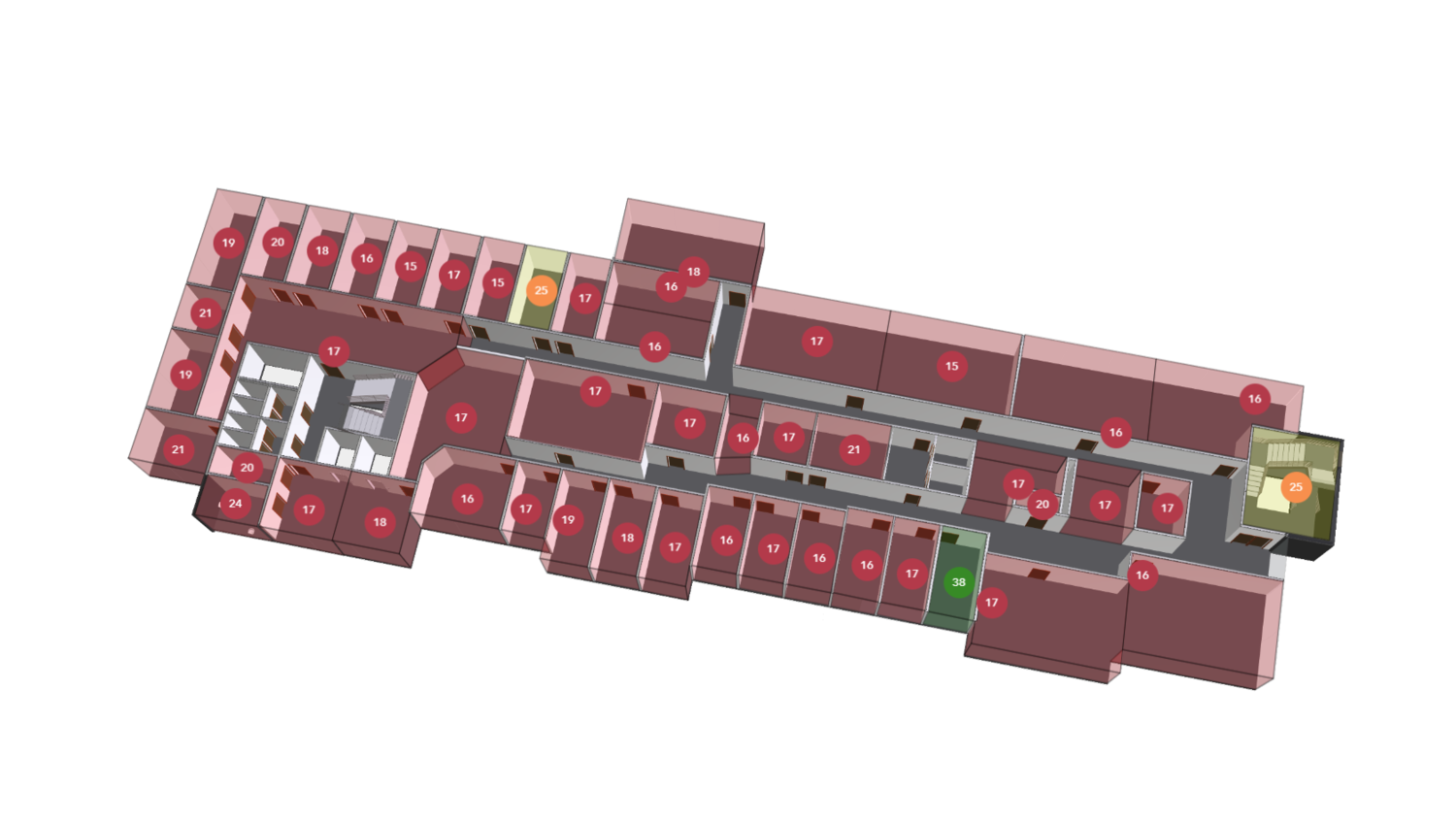 Tommy Hagenes is Business Development Manager at Airthings for Business. He has expertise in Building Management Systems (BMS), PropTech and how to build a sustainable business model. Here he shares his insights into what he believes is an inadequate focus on humidity in the PropTech sector. This content was originally published by Tu.no in Norwegian. For the original article click here.
Tommy Hagenes is Business Development Manager at Airthings for Business. He has expertise in Building Management Systems (BMS), PropTech and how to build a sustainable business model. Here he shares his insights into what he believes is an inadequate focus on humidity in the PropTech sector. This content was originally published by Tu.no in Norwegian. For the original article click here.
Smart buildings and humidity:
What is most important? What’s in the building, who’s in the building or the building itself?
Many buildings have issues with dry air, resulting in well-documented side effects. Including its influence on flu virus transmission. What can we do about it?
Our humidity sensors regularly trigger warnings and notifications as a result of one common problem: dry air. In the above picture, you can see this in action. This is taken directly from one of the Airthings offices at Proptech Bergen, a living co-working lab for testing IoT and new sensor technologies. Newer smarter buildings are often dry and not optimized for healthy indoor air quality which can have a negative effect on employees.
There have been extensive discussions around increasing the humidity of the air which is pumped into commercial buildings, and the opinions vary greatly. I will not argue with the experts, but I do aim to shine some light on a discussion from my PropTech standpoint. Especially as we now have fantastic technology that will enable us to start re-assessing the old solutions.
Humidity needs greater focus
In Scandinavia, dry indoor air can be a big challenge. This is predominantly because of our climate. In the winter, the cooler climate is perfect for low humidity, a problem that is further exacerbated as we warm up the air and bring it through ventilation systems. This further dries it out. This issue seems to be greater the newer the building is.
Recent phenomenons have led many of us to shut down offices and ask employees to work from home. It might be time to re-evaluate if we can do better with the buildings we own and operate.
In 2019 I have been fortunate enough to install sensors in over 100 buildings and I have seen the same challenge every time. Notifications crop up everywhere due to low humidity, especially during winter.
The most common thing to check in a building, or have any control over, is temperature and CO2. However, insights into the humidity level are scarcely seen outside of museums, listed buildings or hospitals. Museums must make it a priority otherwise they risk damage to their artwork including cracks and breakages. Similarly, listed buildings also need to protect against damage to the older wooden structures by monitoring humidity. Hospitals also often monitor to ensure that patients’ wellbeing and comfort are maintained. So why do we not focus on humidity when there is so much research stating that it has an impact on the health and wellbeing of the users in the building?
The well-documented side effects of low humidity
-
Research has found links with humidity and the spread of the flu virus.
-
Reduced productivity
-
Dry skin
-
Discomfort
-
Fatigue
-
Dry eyes
-
Damage to inventory
-
Dry mucous membrane
-
Wooden furniture drying up and cracking
-
Increased static electricity
It seems strange to me that humidity levels used to be well-considered but in newer, smarter buildings humidity isn't prioritized at all. From my past experience in building management systems, humidity sensors were rarely included in smart buildings. Some museums, hospitals and listed buildings, factored in humidity when it came to their ventilation systems, but offices didn’t. The reason? Humidity was not something that could be controlled in the existing BMS.
2019 saw the start of the PropTech Wave. Property Technology was introduced, and building owners had access to a much wider variety of sensors. Many have really started to see the benefit of investing in sensors. Especially those that provide insight into CO2, temperature, humidity and Volatile Organic Compounds (VOCs).
What can we do about this?
In hospitals, museums or listed buildings, we always consider including humidifiers in the ventilation system or elsewhere to ensure the wellbeing of the property and its inhabitants. Yet we never include humidity for normal offices. However, without it, there can be large costs involved. It is possible for mold to grow in the building or the damage to equipment.
Now that there are more sensors on the market, you can monitor and control the air quality a lot more easily and efficiently. You can now monitor the humidity and concentration in problem areas. It would definitely reduce the risk. This would also require a small increase in the cost when it is installed, and during the services and general maintenance of the system
Are local humidifiers a simple and easy solution?
But what can we do with the existing buildings and offices? Could the solution be to add humidifiers to the problem areas? This action is simple and affordable. We did this ourselves locally at Proptech Bergen for some tenants who didn’t want to work from home. With this, we managed to maintain a good indoor air climate with optimal humidity for the employees. On the below graph you can see that we managed to increase to the recommended humidity level within a very short period of time. But is it the right thing to do? It’s not exactly a long term solution.

Air quality in a building
In our homes, we are skeptical about this approach as we have different rooms for different needs. For example, we could get the humidity up to 35-40% in a living room when the temperature measured 23-24 degrees Celcius. But if this air moves into a cold bedroom with no heating there is a potential risk that the humidity could increase to 60-80% and suddenly you have an environment that is suitable for mold growth.
But in our offices, the temperature is the same in all areas of the building. At Proptech Bergen we now have over 3000 sensors in 4000 Sqm, giving us control over the entire building. With this comes the responsibility of managing it well.
Considering the times, maybe now we should focus on opening up the discussion around humidity. We hear every day that the new smart buildings can think for us, but in reality, the air inside is usually dry and not optimal for people to work in.
What should we do? And should we settle with short term solutions or see the bigger picture? What is the most important? The human being or the building itself?

 Most popular
Most popular
 NEW
NEW




 Radon
Radon
 Radon
Radon




 Tommy Hagenes is Business Development Manager at
Tommy Hagenes is Business Development Manager at 

